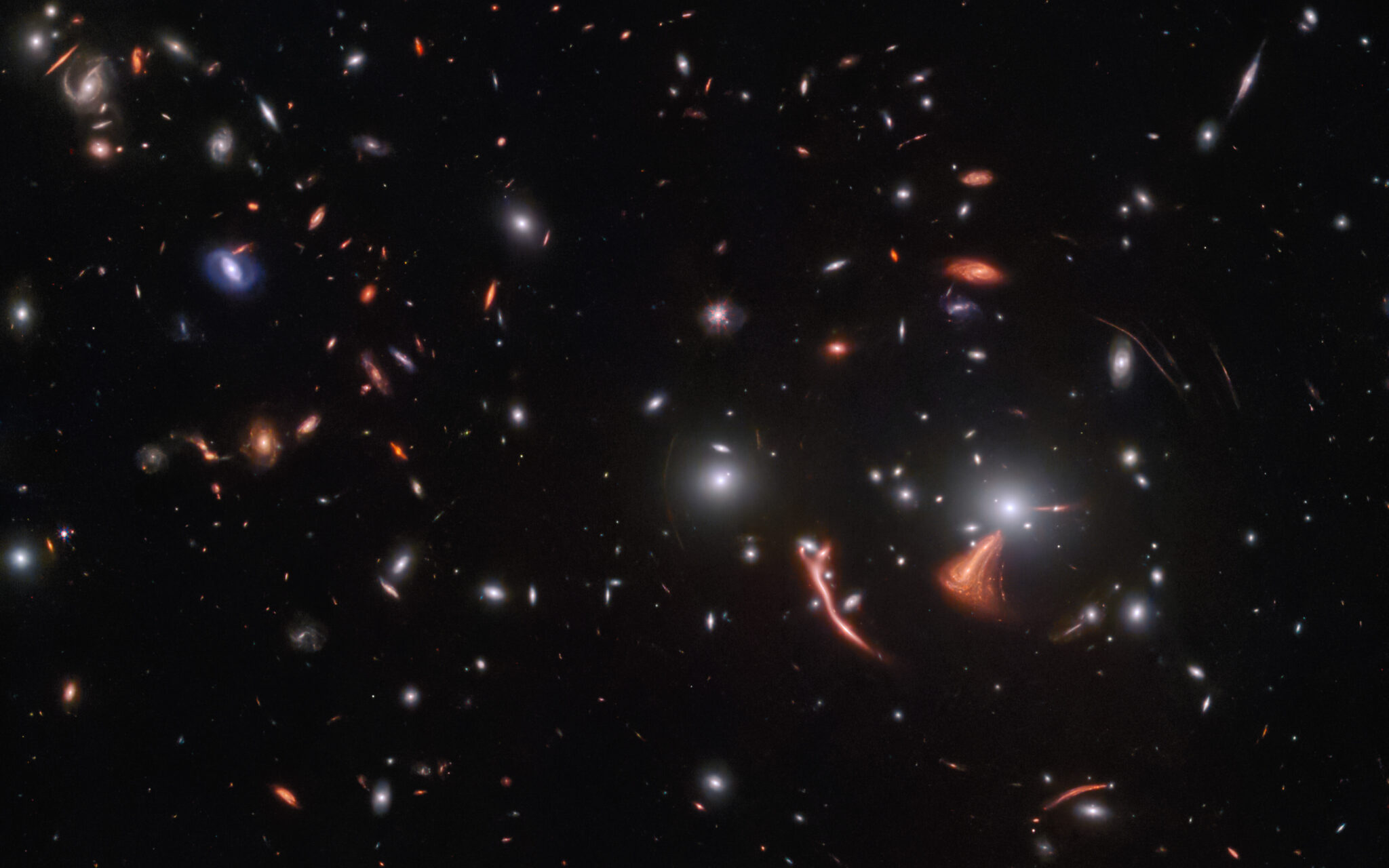Astronomers have directed the James Webb Telescope — the most powerful space observatory that mankind has ever created — at a cluster of galaxies located at a distance of 6.3 billion light-years. It has the designation SDSS J1226+2149 and contains such a huge mass of matter that it literally “crushes” space, like a weight dropped on a mattress. A curved region of spacetime magnifies objects behind it.

“Astronomers call this effect gravitational lensing. It occurs when a massive celestial object — such as a cluster of galaxies — causes sufficient curvature of space-time for light to be bent by it, like a giant lens,” writes the European Space Agency.
Indeed, there is a giant cosmic lens between us and the objects behind SDSS J1226+2149. It, combined with the incredible sensitivity of James Webb, allows astronomers to see some of the oldest galaxies born more than 13 billion years ago, when the Universe was young.
In the lower right part of the image, you can see the light effect caused by distorted space-time. In particular, it is a long bright red arc spreading at the core. This object was named the “Space Seahorse”. Such a powerful magnification allows scientists to look into a distant galaxy and explore the formation of stars in the distant past.
The James Webb Telescope is a joint project of NASA, ESA and the Canadian Space Agency. It is designed to look into the deepest space and extract unprecedented information about the early Universe. It also studies planets near the stars of our Galaxy, as well as objects of our Solar System.
Earlier we reported on how the NASA application would allow us to look at space through the “eyes” of the James Webb Telescope.
Follow us on Twitter to get the most interesting space news in time
https://twitter.com/ust_magazine

